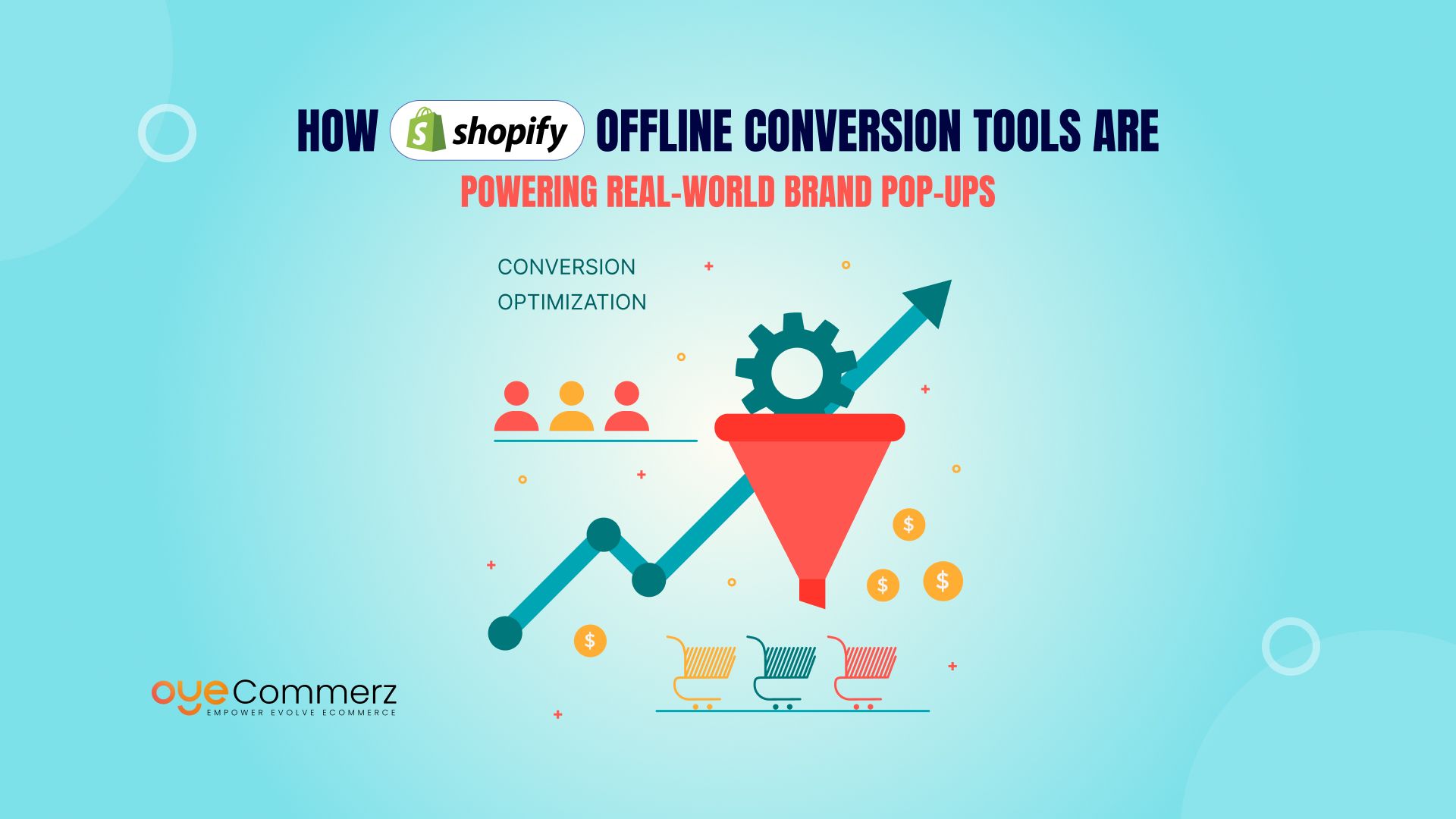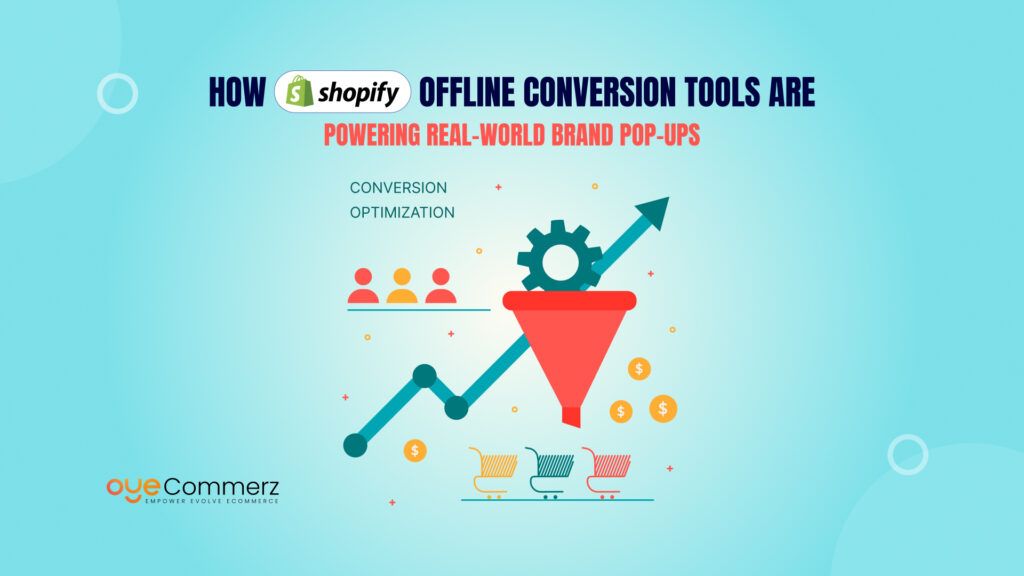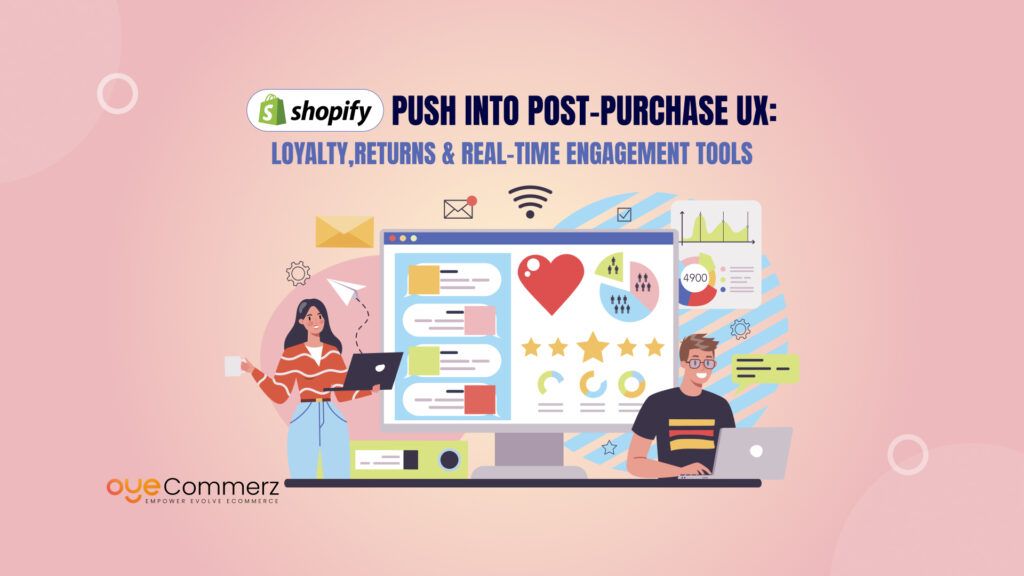Are pop-up shops the future of retail? In 2024, temporary retail spaces, or pop-up shops, generated up to $80 billion in annual revenue, with projections indicating that market value will exceed $95 billion by 2025 . This surge underscores a significant shift in consumer behavior, favoring unique, in-person shopping experiences.
However, many brands struggle to measure the impact of these offline interactions. Enter Shopify’s Offline Conversion Tools, a solution bridging the gap between physical and digital retail. These tools enable businesses to track and analyze in-person sales, providing valuable insights that were previously elusive.
By integrating these tools, brands can seamlessly merge their online and offline strategies, enhancing customer engagement and driving growth. As the retail landscape continues to evolve, leveraging Shopify services becomes essential for businesses aiming to stay ahead in a competitive market.
The Evolution of Retail: From Brick-and-Mortar to Pop-Up Shops
Retail has undergone a dramatic transformation in recent years. Traditional brick-and-mortar stores are no longer the only avenue for building brand presence. Consumers today want more than just products, they crave experiences, stories, and human connection. This shift in behavior has forced brands to think creatively, and pop-up shops have emerged as a highly strategic solution.
Why pop-up shops are thriving:
- They offer exclusivity, limited-time appeal, and immersive experiences.
- Brands can test new markets or products without long-term commitments.
- Pop-ups increase brand visibility and allow real-time feedback from customers.
As more businesses embrace this model, the importance of tracking offline interactions grows. Unlike e-commerce, offline experiences are harder to measure without the right tools. This creates a major gap in the data that businesses depend on to drive decisions.
What brands need today:
- A seamless way to connect physical interactions to digital profiles.
- Accurate sales and behavior tracking in temporary locations.
- Real-time analytics to adjust inventory, messaging, and engagement tactics.
This is where Shopify’s Offline Conversion Tools come into play. These tools empower businesses to capture sales data, customer behaviors, and transaction trends from physical spaces and sync them with their online platforms. By doing so, brands not only reduce blind spots but also unlock smarter, more informed campaigns across channels.
In a world where retail is no longer just transactional, but experiential, having reliable tools to track every touchpoint, whether it happens online or in a pop-up, is non-negotiable. Retailers who adapt to this blended approach are better equipped to meet customer expectations and maximize their business potential in real time. The future of retail isn’t one or the other, it’s both.
Understanding Shopify’s Offline Conversion Tools
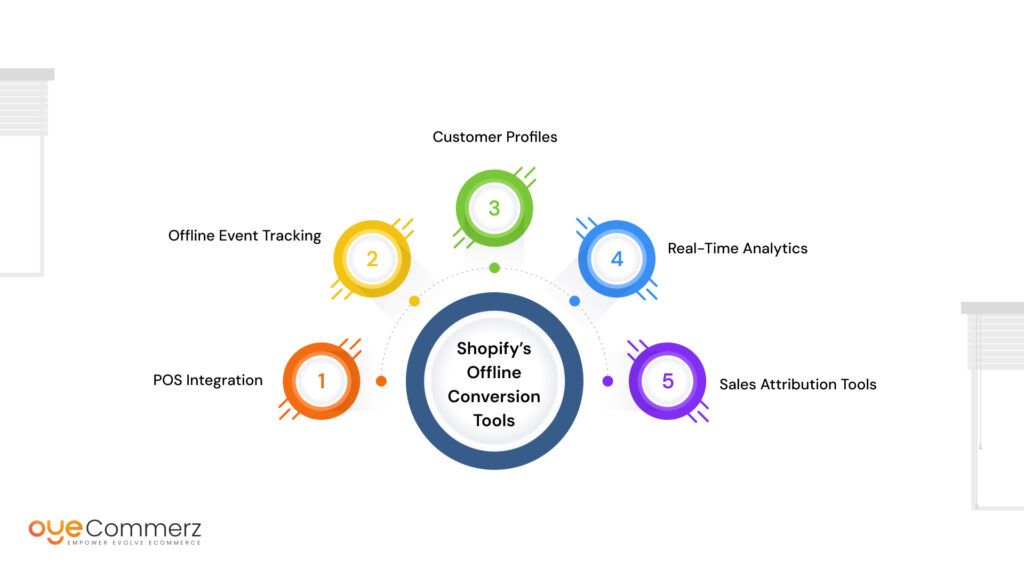
In today’s retail landscape, it’s not enough to only focus on online conversions. Physical retail experiences, especially through pop-up shops, are driving significant engagement and sales. But without accurate data, many of these transactions go untracked. Shopify’s Offline Conversion Tools solve this problem by allowing brands to monitor, measure, and optimize their offline customer interactions just like they do online.
These tools are a part of Shopify’s broader ecosystem of services and come equipped with powerful features:
- POS Integration: Shopify Point of Sale (POS) syncs online and in-store transactions in real time.
- Offline Event Tracking: Captures and logs purchases made through offline events like markets, pop-ups, and in-person demos.
- Customer Profiles: Every transaction updates a unified customer profile, whether it happens online or offline.
- Real-Time Analytics: Access real-time dashboards to track sales, inventory, and customer behavior across locations.
- Sales Attribution Tools: Assign credit accurately to physical locations or sales reps for better performance analysis.
How it works:
- A customer walks into a brand’s pop-up store and makes a purchase.
- The sale is processed using Shopify POS, which is connected to the brand’s online Shopify account.
- The purchase details, items bought, price, customer ID, payment method, are automatically recorded and synced.
- These insights feed into the overall analytics dashboard, offering a complete picture of both online and offline operations.
Why it matters for pop-up strategies:
- Brands can analyze what products perform best in specific regions or settings.
- Inventory planning becomes more accurate, reducing overstock or out-of-stock issues.
- Customer engagement can be fine-tuned using actual purchase data from physical locations.
In essence, Shopify’s Offline Conversion Tools make pop-up selling as measurable and data-rich as e-commerce. For brands exploring hybrid models, these tools are crucial in gaining a full view of business performance and making smarter, faster decisions that drive ROI.
Integrating Offline and Online Data: A Seamless Experience
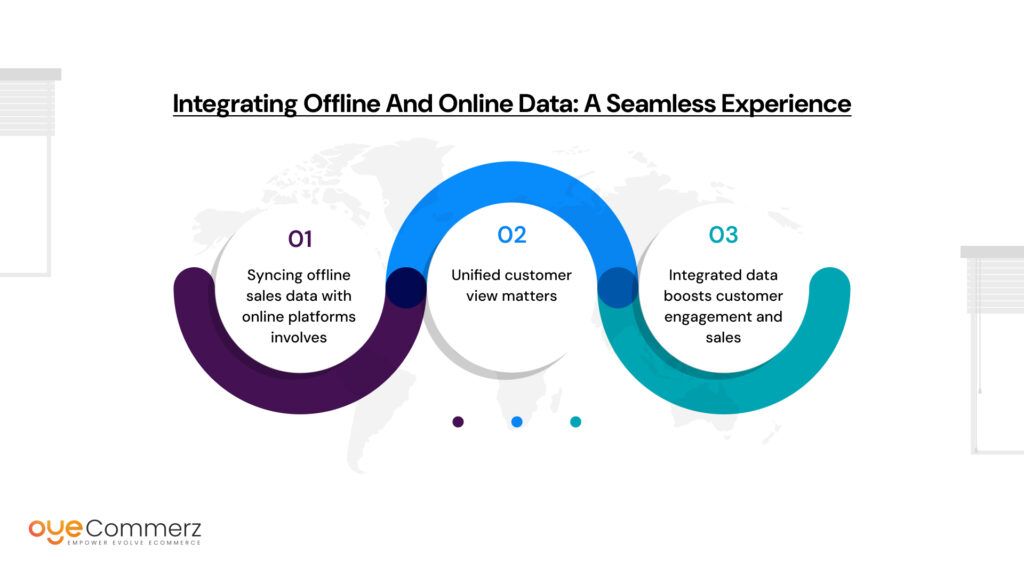
In today’s data-driven world, businesses can no longer afford to treat offline and online channels as separate entities. Whether a customer shops from a mobile app or makes a purchase at a pop-up shop, their experience should be part of one seamless journey. This is where data integration becomes a game-changer, allowing brands to break silos and create consistent, intelligent engagement strategies.
Syncing offline sales data with online platforms involves:
- Using Shopify POS systems to capture offline transactions in real-time.
- Automatically syncing sales, inventory, and customer data with the Shopify dashboard.
- Integrating third-party analytics tools (like Google Analytics or CRM systems) to track cross-channel behavior.
- Creating centralized dashboards where marketers and sales teams can view unified performance metrics.
By using Shopify’s Offline Conversion Tools, brands can effortlessly blend the in-person and digital experiences. The result? A full-circle understanding of customer behavior across all touchpoints.
Why a unified customer view matters:
- It allows businesses to understand the complete journey of each customer, whether they browse online and buy offline, or vice versa.
- Marketing becomes hyper-personalized. For example, if a customer frequently buys in-store, they can receive in-person discount codes or product recommendations for future visits.
- Customer support and loyalty programs become more efficient by referencing both digital and physical interactions.
How integrated data boosts customer engagement and sales:
- Targeted Promotions: A customer who buys skincare at a physical pop-up can be retargeted online with personalized product bundles.
- Better Inventory Management: Brands can track product movement across both online stores and pop-ups, ensuring popular items are always in stock where they sell best.
- Smarter Upselling: Sales staff, armed with customer history, can recommend higher-value items in person based on past online activity.
This level of synchronization not only streamlines operations but also builds deeper trust and loyalty among customers. Shoppers feel understood when their preferences are remembered across platforms. Ultimately, integrated data is what allows brands to offer seamless, memorable, and conversion-friendly experiences, regardless of where the sale happens. The real win lies in blending insight with action, and that’s precisely what Shopify’s tools enable.
Enhancing Customer Engagement Through Real-Time Insights
In the competitive world of retail, timing is everything. Brands that respond faster to customer behavior consistently outperform those that rely on delayed data. This is especially true in fast-paced environments like pop-up shops, where trends change rapidly and opportunities are fleeting. Shopify’s Offline Conversion Tools give businesses the power of real-time insights, enabling them to make smarter, faster decisions that drive better customer engagement.
What is real-time insight?
Real-time insight refers to immediate access to data the moment a transaction or customer interaction occurs, whether online or offline. This data includes purchase history, product preferences, payment methods, and even regional buying patterns. By capturing this information through Shopify POS and syncing it instantly with the backend, brands gain an edge in understanding and reacting to customer needs.
How it enhances marketing strategies:
- Dynamic promotions: If a particular product is selling well at a specific pop-up location, businesses can instantly launch limited-time offers or discounts via SMS, email, or social media to boost conversions.
- Personalized recommendations: With immediate access to what a customer just bought in-store, marketers can push curated product suggestions through digital channels right after checkout.
- Geo-targeted campaigns: Real-time location data from pop-ups allows for hyper-localized advertising, helping businesses drive traffic to specific events or shops.
Impact on inventory management:
- Live stock updates: Shopify’s real-time syncing ensures that both online and offline inventory levels are always accurate, reducing overselling and out-of-stock issues.
- Demand forecasting: Brands can track which items are trending at specific pop-up shops and adjust restocking or production in real-time.
- Efficient reallocation: If an item isn’t selling well at one location but booming at another, businesses can quickly shift inventory to meet demand.
Enhancing customer service with instant data access:
- Faster issue resolution: Support teams can see recent offline purchases in real-time, enabling them to resolve complaints or process returns with full context.
- Seamless omnichannel experience: A customer can purchase in-store, follow up online, and get personalized support without repeating their history.
- Loyalty programs: By tracking offline transactions, customers can immediately receive points or rewards at the moment of purchase, increasing satisfaction and retention.
The power of agility:
Today’s customers expect brands to move at their pace. When preferences shift, whether it’s a sudden spike in demand for a product or a local event driving foot traffic, agile brands can adapt on the fly. Real-time insights remove guesswork and replace it with actionable data. That kind of responsiveness builds trust, encourages repeat business, and significantly improves conversion rates.
In a retail environment where engagement determines longevity, real-time data is no longer optional, it’s essential. By leveraging the speed and accuracy of Shopify’s Offline Conversion Tools, brands can meet customers where they are and offer exactly what they want, when they want it.
Overcoming Challenges in Offline Conversion Tracking
Tracking offline conversions can be complex, especially in temporary retail setups like pop-up shops where the environment changes quickly and customer behavior is less predictable. While Shopify’s Offline Conversion Tools simplify much of the process, businesses still face several challenges when implementing and optimizing their offline data strategies.
Common obstacles brands face:
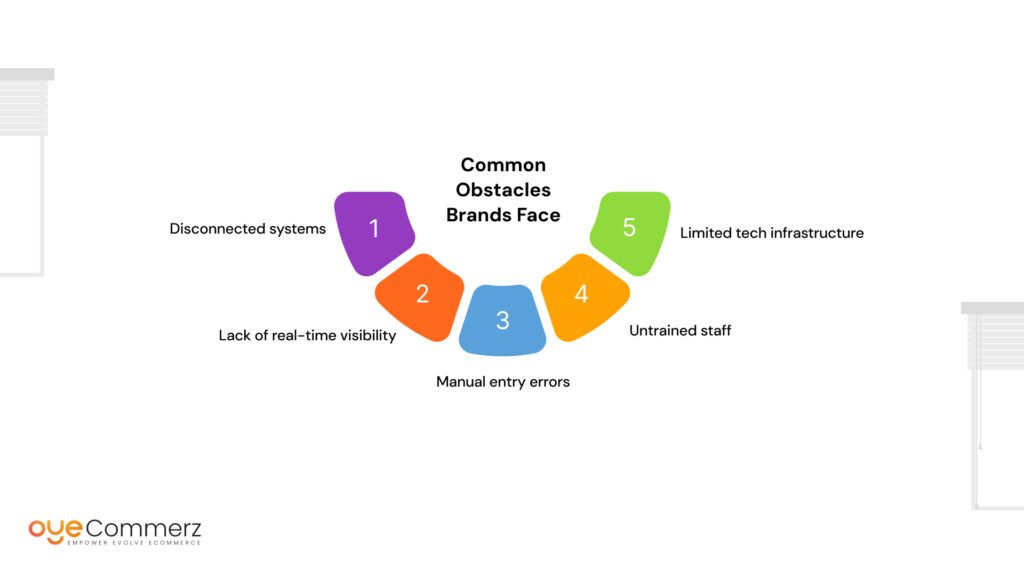
- Disconnected systems: Many retailers operate separate systems for online and offline transactions, leading to fragmented data.
- Lack of real-time visibility: Without proper tools, offline data often gets logged after-the-fact, reducing its strategic value.
- Manual entry errors: Relying on manual inputs at point-of-sale increases the risk of inaccurate or incomplete data.
- Untrained staff: Employees unfamiliar with digital tools or processes may fail to capture critical customer information.
- Limited tech infrastructure: Small businesses or new pop-up ventures may lack the necessary hardware or software to track offline data effectively.
Solutions and best practices for accurate tracking:
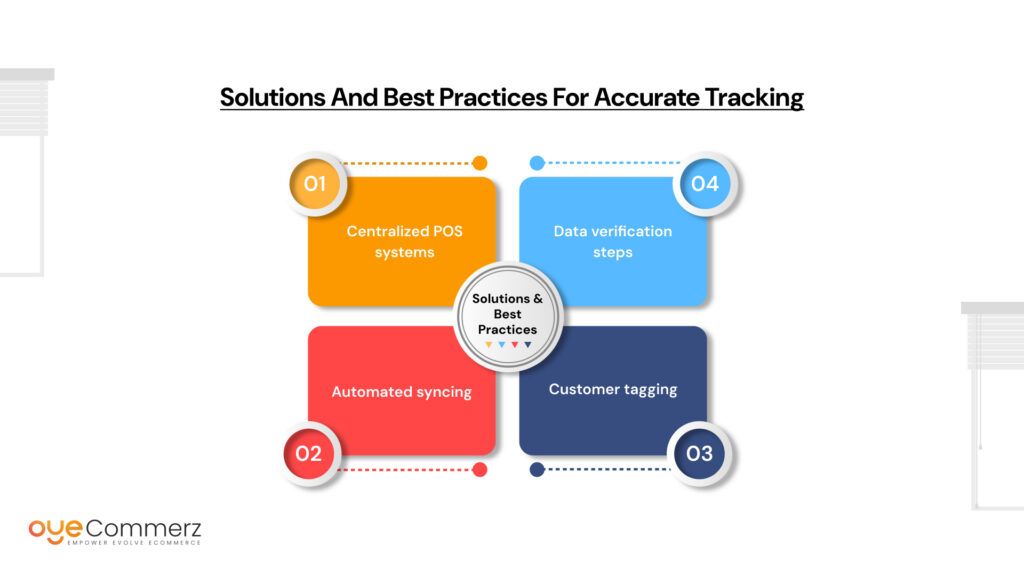
- Centralized POS systems: Implement Shopify POS to unify online and offline sales, keeping all data in one dashboard.
- Automated syncing: Use integrated tools that sync transactions in real-time to eliminate lag and reduce manual input.
- Customer tagging: Encourage the collection of minimal but essential data (email or phone number) during in-store purchases to connect offline transactions with online profiles.
- Data verification steps: Introduce simple protocols like on-screen purchase confirmations or digital receipts to ensure accurate logging.
Role of staff training and tech integration:
- Train staff regularly: Equip teams with hands-on training on Shopify’s POS features, customer data capture methods, and troubleshooting techniques.
- Use intuitive interfaces: Choose tools with easy-to-use dashboards and simple onboarding processes to reduce resistance.
- Encourage staff engagement: Help employees understand the impact of accurate data on marketing success and customer satisfaction.
- Monitor usage patterns: Use backend analytics to identify whether staff are correctly logging data and offer support where needed.
Ultimately, the success of offline conversion tracking doesn’t rely solely on technology, it’s a balance of smart tools and informed people. When retailers invest in both, they unlock the full potential of offline data, improving performance, decision-making, and customer relationships.
Future Trends: The Role of Offline Conversion Tools in Retail Innovation
Retail is rapidly evolving, and the future lies in creating hybrid experiences that merge online convenience with offline engagement. As consumers grow more digitally savvy yet crave human interaction, the demand for seamless shopping journeys will only increase. Pop-up stores, in-person events, and mobile storefronts are becoming essential brand touchpoints, not just temporary experiments.
Emerging retail trends shaping the future:
- Omnichannel personalization: Customers expect consistent and tailored experiences across channels, fueled by real-time data.
- Phygital experiences: Combining physical environments with digital enhancements like AR, QR codes, and app-based navigation.
- Decentralized commerce: Selling through social media, live events, and marketplaces alongside traditional e-commerce sites.
As retail models shift, Shopify’s Offline Conversion Tools will play a vital role in enabling businesses to keep pace. We can expect future versions of these tools to include:
- AI-powered insights for predictive behavior tracking.
- Deeper integrations with marketing platforms and CRMs.
- Mobile-first POS systems for maximum flexibility at remote locations.
- Improved personalization capabilities, driven by unified data from all touchpoints.
For brands looking to grow, the message is clear: innovation isn’t optional, it’s a necessity. Adopting cutting-edge tools like Shopify’s suite not only improves operational efficiency but also creates memorable customer experiences that translate into long-term loyalty.
Staying ahead in retail means being ready for what’s next. Businesses that embrace integrated, tech-enabled strategies today will be better prepared to meet tomorrow’s challenges. As customer expectations rise, Shopify continues to provide the flexible, scalable solutions needed to deliver on them, online, offline, and everywhere in between.
Ready to Power Your Next Pop-Up with Shopify’s Offline Conversion Tools?
At OyeCommerz, we specialize in Shopify services that help you track, optimize, and scale your real-world retail experiences. Whether you’re launching your first pop-up or integrating offline insights into your digital strategy, we’ve got the tools and expertise to make it seamless.
Let’s bring your retail vision to life, online and offline.
Contact to Migrate your Site to Shopify Now
Conclusion
The modern retail landscape is no longer confined to static storefronts or online checkouts. Today’s consumers demand flexibility, personalization, and engaging experiences, making pop-up shops a vital strategy for innovative brands. Throughout this blog, we explored the transformation from traditional retail to hybrid models, the functionality of Shopify’s Offline Conversion Tools, and how real-time insights drive smarter marketing, inventory, and service decisions.
Shopify’s tools empower businesses to capture every offline interaction, seamlessly integrating it with digital analytics to form a unified customer journey. From personalized promotions to optimized inventory, the benefits of this technology are both immediate and long-lasting.
To truly stay competitive, brands must embrace this evolution. Leverage powerful Shopify services to bridge online and offline gaps, boost engagement, and turn every pop-up into a high-performing touchpoint.
Start building your connected retail future, today.
Frequently Asked Questions
Install the Google Ads or Facebook Pixel via Shopify’s admin, add tracking codes to your store, and configure conversion goals to monitor sales and user actions.
Offline conversions track customer actions completed offline (like in-store purchases) after interacting with your Google Ads, helping measure true ad impact.
Improve site speed, use clear CTAs, optimize product pages, simplify checkout, and leverage customer reviews to enhance user experience and boost conversions.
It records specific user actions (like purchases) on your website by using tracking pixels or tags, linking these actions back to marketing campaigns.
Conversion tracking helps you measure campaign effectiveness, optimize marketing spend, and improve ROI by understanding which actions lead to sales.

